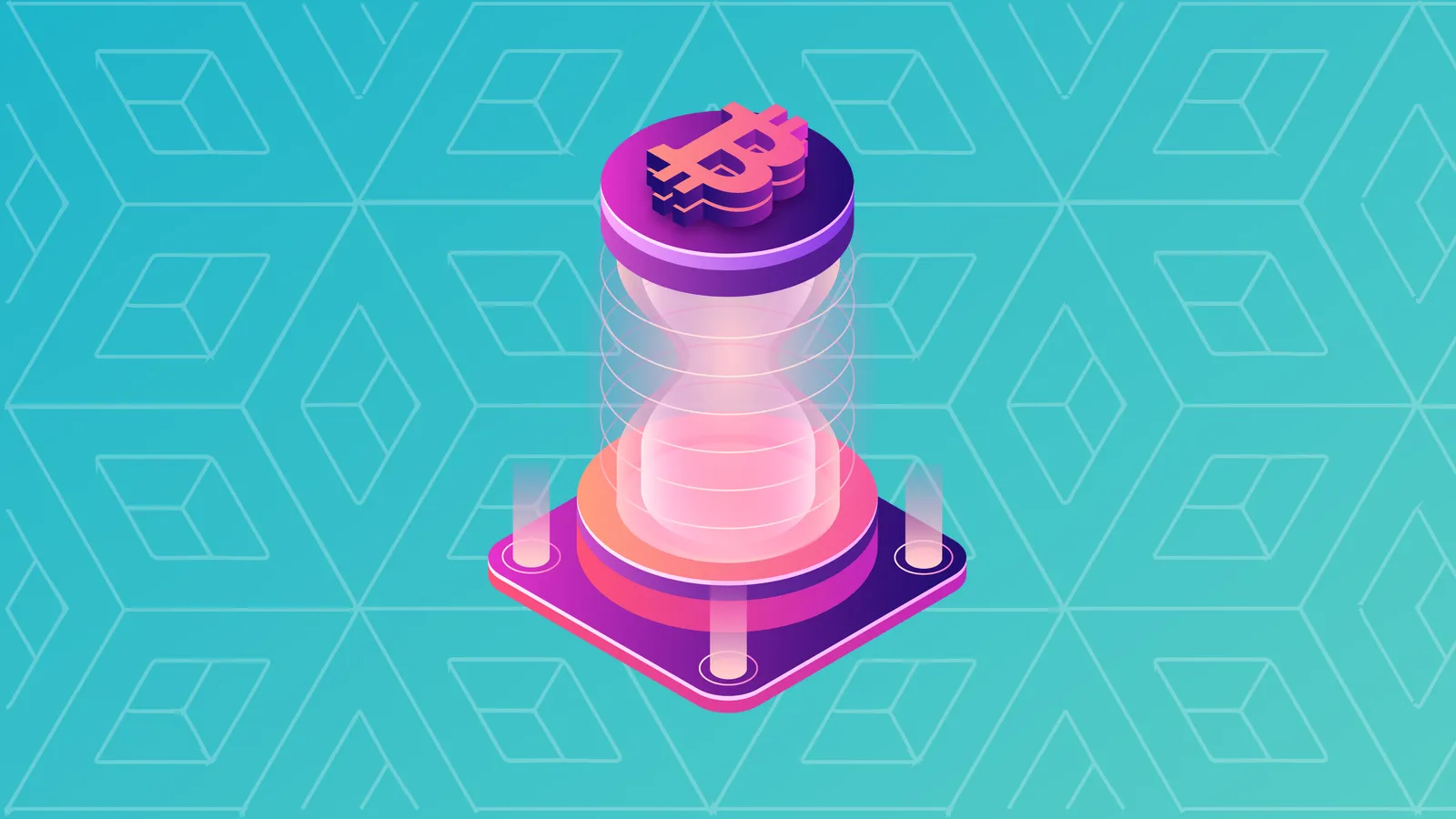In brief
- The Bitcoin halving is an event where mining rewards are cut in half.
- The event takes place every four years, according to pre-set rules in Bitcoin's code.
Earn a free on-chain NFT by taking our course, "Bitcoin Halving 101: What it Means for Miners and Investors."
Every four years, the amount of Bitcoin doled out to cryptocurrency miners halves in a process imaginatively known as the Bitcoin halving (or halvening, though the term has fallen out of favor in recent years). Here’s why—and how—it works.
Bitcoin’s supply limit
To understand the Bitcoin halving, we must first understand the theory behind its supply.
The inventor of Bitcoin, Satoshi Nakamoto, believed that scarcity could create value where there was none before. After all, there’s only one Mona Lisa, only so many Picassos, a limited supply of gold on Earth.
Bitcoin was revolutionary in that it could, for the first time, make a digital product scarce—there will only ever be 21 million Bitcoin.
The idea of limiting Bitcoin’s supply stands in marked opposition to how fiat currencies such as the U.S. dollar work. Fiat currencies initially were created with firm rules—to create one dollar, the U.S. government needed to have in reserve a certain amount of gold. This was known as the gold standard.
Over time, these rules eroded as modernizing economies, during bouts of extreme financial uncertainty–like the Great Depression and World War II–printed more money to help stimulate struggling economies. Over time, these rules evolved into today’s system, in which governments can (broadly speaking) print money whenever they like.
Satoshi Nakamoto believed that this devaluation of fiat money could have disastrous effects, and so, with code, prevented any single party from being able to create more Bitcoin.
What is the Bitcoin halving?
Embedded in the Bitcoin code is a hard cap of 21 million coins. New Bitcoin is released through mining as block rewards. Miners do the work of maintaining and securing the Bitcoin ledger and are rewarded with newly minted Bitcoin.
However, approximately every four years, the reward for mining is halved, and each halving reduces the rate at which new Bitcoin enters the supply—a process that likely will last until 2140.
Did you know?
The first million Bitcoin were mined by Satoshi Nakamoto in 2009. Since then, over 93% of the total supply has been mined and only about 1.44 million more Bitcoin will ever be created.
A brief history
- 2009: Bitcoin mining rewards start at 50 BTC per block.
- 2012: The first Bitcoin halving reduces mining rewards to 25 BTC.
- 2016: In the second halving, mining rewards go down to 12.5 BTC.
- 2020: In the third halving, mining rewards drop to 6.25 BTC.
- 2024: In the fourth halving, which took place on April 19 or 20, 2024 depending on time zones, mining rewards dropped to 3.125 BTC.
- 2028: In the fifth halving, expected to take place in 2028, mining rewards will drop to 1.5625 BTC.
- 2140: The 64th and last halving occurs and no new Bitcoin are created.
What’s so special about the halving?
If a person, group, or government is trusted to set up the money supply, they must also be trusted to not mess with it. Bitcoin is supposed to be decentralized and trustless—no one in control, and no one to trust. Since Bitcoin is not controlled by any one person or group, there must be strict rules about how much Bitcoin is created and how it's released.
By writing a total supply and halving event into the Bitcoin code, the monetary system of Bitcoin is essentially set in stone and practically impossible to change. This “hard cap” means Bitcoin is a kind of “hard money” like gold, the supply of which is practically impossible to change.
What happens to Bitcoin miners?
Bitcoin miners invest money in specialized mining hardware as well as the electricity required to run their rigs. The cost of this is offset by their mining rewards, but what happens when their rewards are halved?
Since the halving reduces rewards, the incentive for miners to work on the Bitcoin network is also reduced, leading to fewer miners and less security for the network.
For this reason, once the last Bitcoin is mined, miners will (assuming there haven’t been any major changes to the Bitcoin protocol) receive rewards in the form of transaction fees for maintaining the network.
At present, transaction fees make up only a small proportion of a miner’s revenues—following the 2024 halving, miners mint around 428 BTC (about $28.3 million) a day, but earn between 60 and 100 BTC ($3.9 million to $6.6 million) in daily transaction fees. That means transaction fees currently make up as little as 14% of a miner’s revenue—but in 2140, that’ll shoot up to 100%.
"Transaction fees will likely grow in an inverse correlation to, and as a compensation for, the diminishing mining returns," Ben Zhou, CEO of crypto exchange ByBit, told Decrypt.
It’s also possible that the reward mechanism for Bitcoin could change before the final block is mined. Bitcoin currently runs on a proof-of-work consensus mechanism, which has attracted criticism from the likes of Tesla CEO Elon Musk for its high energy consumption.
Rival cryptocurrency Ethereum is in the process of switching from proof-of-work to the less energy-intensive proof-of-stake consensus mechanism, in which the network is secured by having validators lock up, or “stake,” their cryptocurrency. According to University College London's Centre for Blockchain Technologies, proof-of-stake blockchains use several orders of magnitude less energy.
It’s possible Bitcoin could follow suit. In an interview originally shot for German TV show "Galileo," Niklas Nikolajsen, the founder of Swiss crypto broker Bitcoin Suisse, was quoted as saying "I’m sure, once [proof of stake] technology is proven, that Bitcoin will adapt to it as well."
However, despite environmentalist groups such as Greenpeace urging a switch to proof-of-stake, it remains unlikely that a sufficient number of Bitcoin validators would support any hard fork that switched the network over to an alternative consensus mechanism.
“There is virtually no chance that a hypothetical Bitcoin on PoS would be accepted as the original Bitcoin, and it's highly improbable that it would ever come into existence,” Phil Harvey, CEO of Bitcoin mining consulting firm Sabre56, told Decrypt in response to Greenpeace's campaign.
“Bitcoin's use case as a sound, decentralized, immutable, uncensored, globally accessible, and self-custodied reserve currency is intrinsically connected to PoW. Its pillars, such as the halving cycles, mining economics, and block validation, all rely on this consensus mechanism," Harvey said. "Introducing PoS to the Bitcoin network would change its entire identity and value proposition.”
When is the next Bitcoin halving?
Although Bitcoin's next halving is expected to take place in 2028, the exact date and time of each Bitcoin halving is hard to pin down, because it takes place at a fixed block height—and the turnaround time between each block fluctuates based on demand.
Each block holds approximately 2,700 transactions, with Bitcoin blocks typically mined at a rate of around 10 minutes. However, during times of high demand, the block turnaround speeds up and the halving draws closer. Conversely, when there are fewer transactions, things slow down, and the projected halving time shifts further away.
As the 2028 halving draws nearer, estimates of exactly when it will take place should grow progressively more precise.
The Bitcoin halving's price impact
The debate over whether Bitcoin halvings affect the cryptocurrency’s price, or whether they’re already “priced in,” continues to rage.
According to the laws of supply and demand, the dwindling Bitcoin supply should increase demand for Bitcoin, and would presumably push up prices. One theory, known as the stock-to-flow model, calculates a ratio based on the current supply of Bitcoin and how much is entering circulation, with each halving (unsurprisingly) having an impact on that ratio. However, others have disputed the underlying assumptions upon which the theory is based.
Historically, after previous halving events, the price of Bitcoin has increased—but not immediately, and other factors have played a part.
At the time of the June 2016 halving, the price of Bitcoin was around $660; following the halving, Bitcoin continued to trade horizontally until the end of the month, before falling as low as $533 in August. But then Bitcoin’s price shot up to its then-all-time high of over $20,000 by the end of the year, an increase of 2,916%.
Similarly, in the wake of the 2020 halving, Bitcoin’s price increased from just over $9,000 to over $27,000 by the end of the year—but in the two months following the halving, the price didn't break $10,000.
It’s also important to note that other factors influenced Bitcoin’s 2020 bull run, most notably growing institutional investment from the likes of MicroStrategy, PayPal’s decision to enable its users to buy and hold Bitcoin. A 2024 Coinbase research report also pointed to "extraordinarily loose monetary policy and historically strong fiscal stimulus" resulting from the coronavirus pandemic and lockdown as impacting on Bitcoin's price following the 2020 halving.
The 2024 halving, Bitcoin ETFs and miners
2024's halving took place under somewhat different circumstances, with Bitcoin having surged to an all-time high of over $73,000 a month ahead of the event. Historically, pre-halving Bitcoin prices have usually dropped from an all-time high that was set a considerable time before the halving.
Bitcoin's 2024 price surge followed the approval of spot Bitcoin ETFs in the U.S., seen by many as a bellwether for institutional adoption of the cryptocurrency. Bitcoin ETF inflows have also been outpacing the production of Bitcoin miners even before the block reward is halved, further setting up a very different environment.
Meanwhile, JP Morgan analysts predicted a significant price correction following the halving, arguing that an increase in mining difficulty could push smaller miners out of operation. Mining difficulty is as much as 20% less than anticipated, they wrote—in turn, bringing down the production cost of mining.
"This 20% drop would bring the hashrate closer to its historical trend,” JP Morgan strategists wrote in the report, effectively slashing the estimated production cost range to $42,000. "This $42k estimate is also the level we envisage Bitcoin prices drifting towards once Bitcoin-halving-induced euphoria subsides after April," they added.
"This time around, I think miners are better prepared," Dessislava Aubert, Director of Research at the crypto analytics firm Kaiko, argued. Aubert suggested that miners have been building liquidity ahead of the halving, and that the sector has "consolidated significantly over the past year."
Just before the 2024 halving took place, JP Morgan analysts argued that it was "priced in," something which appeared to be borne out as the price of BTC held steady in the immediate aftermath of the halving.
Editor's note: This article was originally published on March 4, 2023 and last updated on April 22, 2024, to add the latest details regarding the halving.




